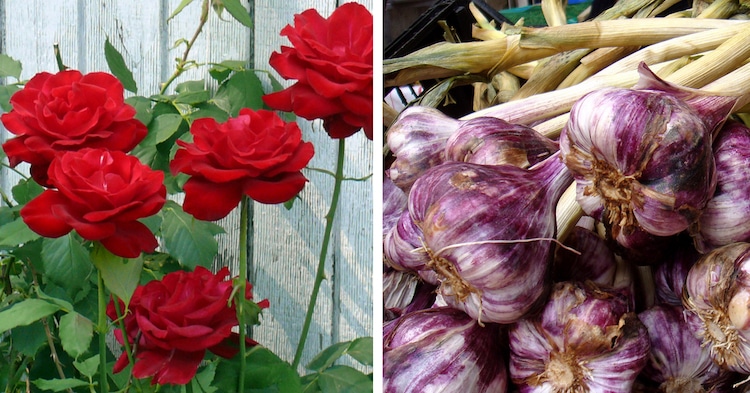
Image credit: Glenn Harris/Siv Andersson
You may think that sunlight, soil, and water are all that a garden needs to flourish, but did you know that plants also thrive on companionship? While you won't find your flowers socializing, sowing certain types of seeds in pairs has been scientifically proven to culminate in healthier and happier greens. Endearingly known as companion plants, these perfectly matched duos help each other grow, bloom, and blossom.
In the wonderful world of companion plants, opposites attract. In each pair, the plants benefit each other in unique and seemingly serendipitous ways. Tall flowers, like cleome, often provide the perfect amount of shade for ground-dwelling plants, like cabbage. Similarly, sturdy plants, like corn, physically support delicate vines, like those belonging to beans. Many botanical species also ward off the pests of another, like marigolds and melons, roses and garlic, and cucumbers and nasturtiums. Likewise, some types of vegetation attract insects that will actually help their neighbors grow, like potatoes and sweet alyssum as well as cauliflower and dwarf zinnias.
Here are some classic pairs of companion plants:
Cabbage and Cleome

Image credit: Lucy Hordern/Susan Chaffin
Towering flowers, such as cleome, provide the perfect amount of dappled shade for the ground-dwelling cabbage plants.
Corn and Beans
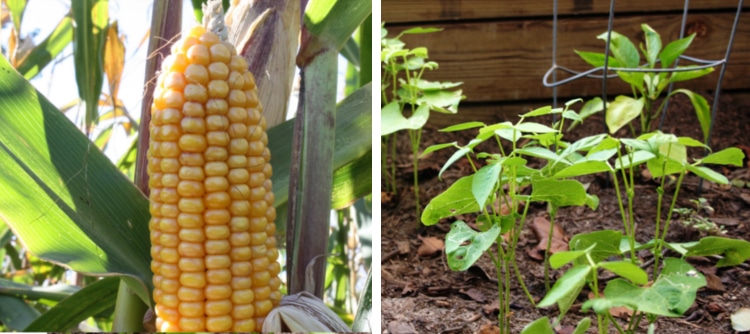
Image credit: Paul (Stokpik)/clutterandkindle
The winding vines of beans love to inch their way up the study corn stalks. Additionally, the bean plants attract insects that help to control corn pests.
Melons and Marigolds
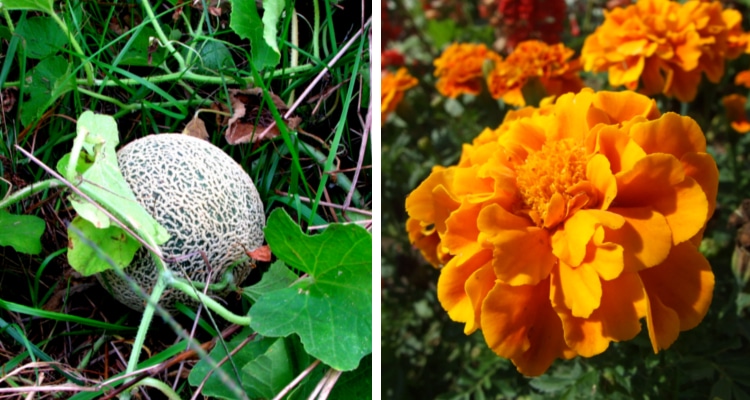
Image credit: Sarah Searle/Stephenie O'Callaghan
Marigolds help to repel nematodes—potentially parasitic worms—that love to infest melon roots.
Roses and Garlic
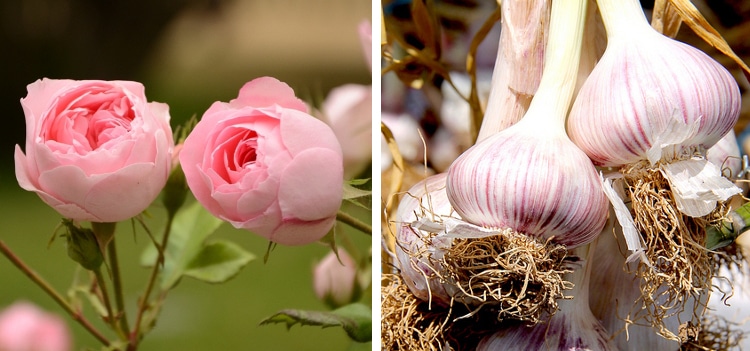
Image credit: Madhusanka Liyanage/Jane Dent
Garlic deters potential pests, like aphids, ants, and snails, that may harm the beautiful roses.
Cucumbers and Nasturtiums
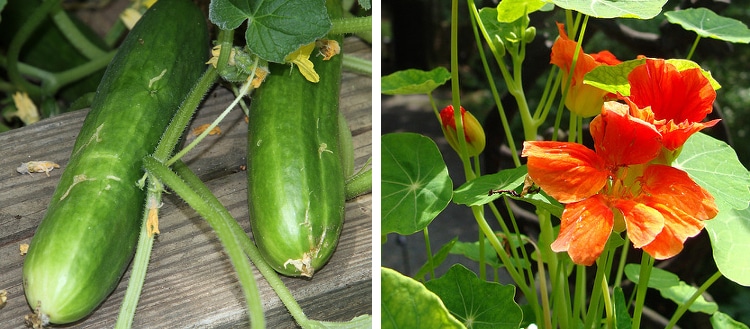
Image credit: Jim Capaldi/Dawn Houghtaling-Montague
Nasturtiums, flowering plants, keep numerous types of cucumber-loving beetles and spiders at bay.
Potatoes and Sweet Alyssum

Image credit: Tina Garrison and PietervH
The teeny flowers of the sweet alyssum lure beneficial bugs, including predatory wasps that prey upon potential potato pests.
Cauliflower and Dwarf Zinnias
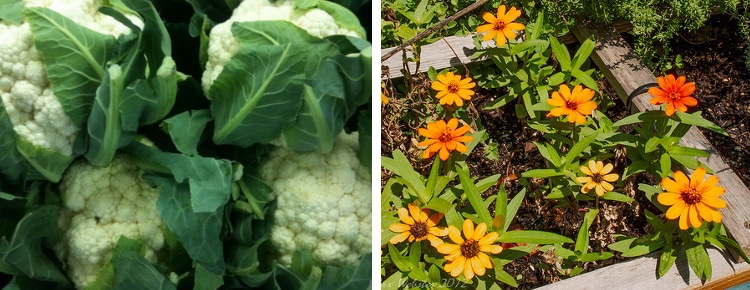
Image credit: Mike Mozart/Mike Webster
Ladybugs love the sweet nectar of the dwarf zinnia. Ladybugs help to protect cauliflower by munching on harmful aphids.
Time to get gardening!
h/t: [Neatorama, Rodale's Organic Life]






















































































